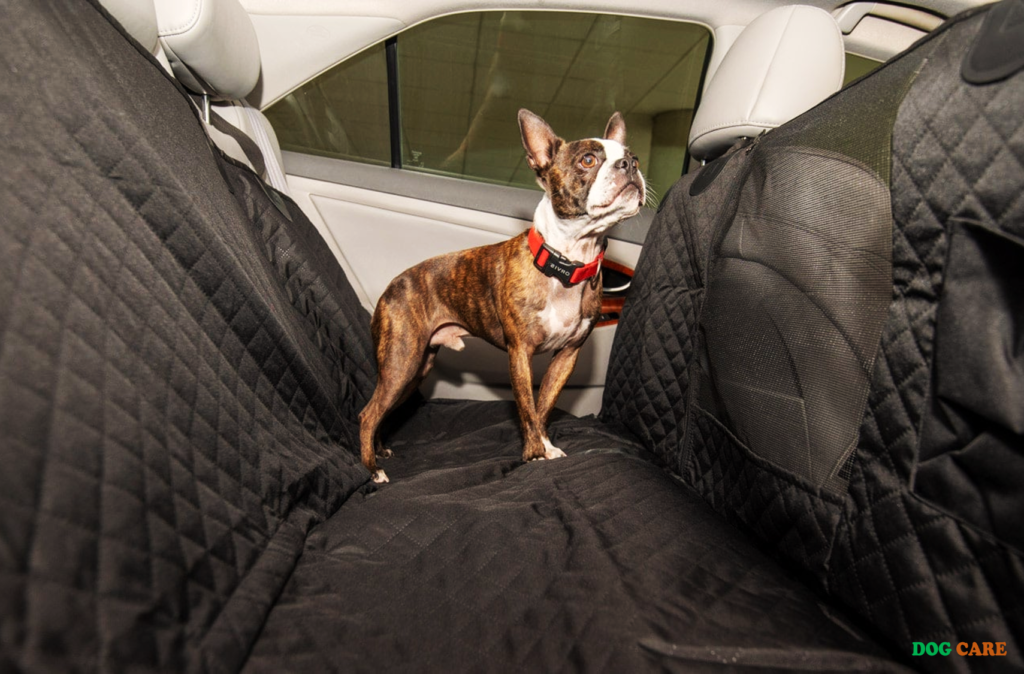Hyperkeratosis Dog Paw Treatment: Hyperkeratosis, a thickening and hardening of the paw pads, can cause discomfort and pain for dogs. However, with consistent care, symptoms can be minimized. Daily moisturizing and regular exfoliation can effectively treat hyperkeratosis in dog paws and maintain paw health.
-
What Is Hyperkeratosis In Dogs?
Hyperkeratosis is a common dermatological condition that affects dogs’ paw pads and noses. It is characterized by the excessive growth of keratin, a protein that makes up the outermost layer of the skin. This abnormal skin thickening and hardening can be uncomfortable for dogs and, if left untreated, may lead to complications.
1.1 Definition And Causes
In simple terms, hyperkeratosis refers to the thickening of the skin due to the overproduction of keratin. This condition can occur in different forms, with the most common type being hyperkeratosis of the paw pads. Certain dog breeds, such as Labradors, Bedlington Terriers, and Bull Terriers, are more prone to developing this condition.
The causes of hyperkeratosis can be both genetic and acquired. In some cases, it may be hereditary and passed down from generation to generation. However, environmental factors such as excessive friction or pressure on the paws can also trigger the condition. Inadequate grooming or poor nutrition can exacerbate hyperkeratosis, making providing proper care for your furry friend essential.
1.2 Symptoms And Diagnosis
Identifying hyperkeratosis in your dog is crucial for starting timely treatment. The symptoms may vary depending on the severity of the condition. Some common signs to look out for include:
- Cracked or rough paw pads
- Abnormal thickening of the skin on the paw pads or nose
- Discomfort or pain while walking
- Calluses or corns on the paw pads
- Loss of traction or slipping on smooth surfaces
If you notice any of these symptoms in your beloved pet, it is essential to consult a veterinarian for an accurate diagnosis. The vet will conduct a thorough examination of your dog’s paws and nose and may also perform additional tests to rule out other underlying conditions.
1.3 Importance Of Treatment
Treating hyperkeratosis in dogs is crucial to preventing further complications and improving their overall well-being. Ignoring the condition can lead to pain, infections, and difficulties in the dog’s day-to-day activities, such as walking or running. With the proper treatment and care, you can help your furry friend regain comfort and maintain healthy skin.
The treatment approach for hyperkeratosis may include:
- Regular moisturizing of the affected areas using specialized balms or creams
- Gentle removal of the excess keratin using emollients or pumice stones
- Proper grooming and hygiene practices to prevent the accumulation of dirt and bacteria
- Dietary changes or supplementation to support skin health
- Management of any underlying conditions contributing to hyperkeratosis
Remember, early detection and proper treatment can significantly affect your dog’s quality of life. So, be proactive regarding your furry friend’s skin health and consult a veterinarian for guidance on managing hyperkeratosis.
- Understanding Dog Paw Health
As dog owners, we are responsible for ensuring the well-being of our furry friends, and that includes taking care of their paws. A dog’s paws play a vital role in their daily activities, and any discomfort or issue in this area can greatly affect their overall health and happiness. In this section, we will delve into the anatomy of a dog’s paw, common paw problems, and the impact of hyperkeratosis on paw health.
2.1 Anatomy Of A Dog’s Paw
To better comprehend paw health, we must familiarize ourselves with the anatomy of a dog’s paw. A dog’s paw consists of several components that work together seamlessly. Here’s a breakdown of these essential paw structures:
Paw Structures Description
Pads are Thick, cushioned areas that provide shock absorption and protect the bones and joints.
Claws Hard coverings at the end of each toe are used for traction, digging, and defense.
Digital Pads Located behind the central pads provide additional grip and stability.
Dewclaws are located higher up on the leg, playing a minor role in traction.
Metacarpal and Metatarsal Pads are Found further up the leg; these provide support and cushioning.
2.2 Common Paw Problems
Like humans, dogs can experience various paw problems that cause discomfort and pain. The following are some of the most common paw issues faced by our canine companions:
- Cuts and wounds
- Burns and blisters
- Cracked or dry paw pads
- Foreign objects or debris stuck between the toes
- Fungal or bacterial infections
- Paw allergies
Regularly monitoring your dog’s paws and prompt treatment for these problems can help prevent further complications and discomfort.
2.3 Impact Of Hyperkeratosis On Paw Health
Hyperkeratosis is characterized by thickened, dry, and excessive growth of the outer layers of the skin, commonly affecting a dog’s paw pads. This condition can lead to several issues, including:
- Cracking and fissures in the paw pads
- Inflammation and redness
- Pain and discomfort while walking or running
- Bacterial or fungal infections due to the weakened skin barrier
Understanding the impact of hyperkeratosis on paw health is crucial in providing the proper treatment and care for affected dogs. With appropriate management, including regular moisturization and veterinary guidance, your beloved pet’s physical and emotional well-being can be restored.
- Treating Hyperkeratosis In Dogs
Hyperkeratosis in dogs can be effectively treated with specialized paw treatments. These treatments help to manage the excessive keratin growth on the paw pads, providing relief and improving your dog’s mobility and comfort.
Hyperkeratosis is a common skin condition in dogs that causes the paw pads to thicken and harden. It can be uncomfortable and painful for dogs, leading to difficulty walking and potential infections. Fortunately, there are several effective ways to treat hyperkeratosis in dogs. This section will explore four approaches: paw soaking and moisturizing, regular paw maintenance, medical treatments, and natural remedies.
3.1 Paw Soaking And Moisturizing
One of the simplest and most effective ways to alleviate the symptoms of hyperkeratosis is through regular paw soaking and moisturizing. Soaking your dog’s paws in warm water for 10-15 minutes can help soften and loosen the thickened skin. To further hydrate the paws, you can add a gentle pet-safe moisturizer, like coconut oil or aloe vera, to the water. Afterward, pat the paws dry and apply a moisturizing balm or paw wax designed for dogs to keep the skin supple and prevent further cracking.
3.2 Regular Paw Maintenance
Regular paw maintenance is crucial in managing hyperkeratosis in dogs. This includes keeping the paw pads clean and trimmed. Start gently washing the paws with a mild dog-friendly cleanser to remove dirt or debris. Avoid using harsh soaps or chemicals that can irritate the skin. Next, carefully trim the excess, hardened skin using a pair of pet nail clippers or a specialized tool called a paw pad grinder. Take caution not to cut into the sensitive live tissue underneath the hyperkeratosis. Regular maintenance helps prevent the buildup of thickened skin and promotes healthy paw pad growth.
3.3 Medical Treatments
In severe cases of hyperkeratosis, your vet may recommend medical treatments. These treatments often involve the use of prescription medication or ointments that target the thickened skin. Your vet may prescribe topical creams containing ingredients like salicylic acid or urea, which promote the shedding of excessive skin cells and soften the paw pads. In more extreme cases, your vet might suggest surgical interventions or laser therapy to remove the excessively thickened skin and promote healing.
3.4 Natural Remedies
For those who prefer a more holistic approach, natural remedies can help manage hyperkeratosis in dogs. Some natural options include applying organic products such as shea butter, beeswax, or olive oil to moisturize and protect the paw pads. Another natural remedy is incorporating dietary supplements rich in omega-3 fatty acids, which can reduce inflammation and promote healthy skin.
It’s essential to consult with a holistic veterinarian to determine the most suitable natural remedies for your dog’s condition. In summary, treating hyperkeratosis in dogs involves a combination of regular paw soaking and moisturizing, proper paw maintenance, medical treatments, and natural remedies. These approaches can alleviate your dog’s discomfort, improve its paw health, and enhance its overall well-being. Remember to consult your vet for a proper diagnosis and personalized treatment plan for your furry companion.
- Creating An Optimal Paw Care Routine
Discover the most effective treatment for hyperkeratosis on dog paws with our comprehensive guide to creating an optimal paw care routine. Follow these expert tips to keep your furry friend’s paws healthy and comfortable.
4.1 Daily Cleaning And Moisturizing
Keeping your dog’s paws clean and moisturized is essential to their paw care routine. Daily cleaning helps eliminate dirt, debris, and bacteria that can build up on their paws. To gently wipe their paws, use a mild, pet-safe cleanser and warm water. Avoid using harsh chemicals or soaps that can cause irritation or dryness.
After cleaning, remember to moisturize your dog’s paw pads to prevent dryness and cracking. Look for paw balms or moisturizers specifically made for dogs. Apply a thin layer of the moisturizer to the pads, focusing on any rough or dry areas. Massaging the moisturizer into the paws can also help improve blood circulation.
4.2 Trimming Excess Keratin
Trimming excess keratin is crucial for managing hyperkeratosis in your dog’s paws. Excessive keratin production can lead to thick, rough, and overgrown paw pads. Regularly trimming the excess keratin can help prevent discomfort and potential infections. To trim, use a pair of sharp, pet nail clippers designed for paw pad trimming.
Before trimming, make sure your dog is comfortable and relaxed. Gently hold their paw and carefully trim the excess keratin, not cutting too close to the sensitive areas. Gradually remove small layers at a time to avoid causing pain or injury. If you’re unsure or your dog is resistant, consider seeking guidance from a professional groomer or veterinarian.
4.3 Special Considerations For Certain Dog Breeds
Regarding paw care, different dog breeds may have unique needs. Some breeds are predisposed to hyperkeratosis and require extra attention. Breeds such as Bulldogs, Boxers, and Labradors tend to be more prone to paw pad issues. Understanding your dog’s breed and paw care requirements can help you tailor their routine accordingly.
Breed Paw Care Tips
Bulldogs Regularly clean and moisturize their paw pads. Keep them away from abrasive surfaces.
Boxers should Trim their nails and manage any excessive keratin growth promptly. They should also receive proper supplements to support overall skin health.
Labradors Keep their paw pads moisturized. Consider protective boots in extreme cold or hot conditions.
4.4 Preventive Measures
Prevention plays a vital role in maintaining your dog’s paw health. Implementing a few preventive measures can help reduce the risk of hyperkeratosis and keep their paws in top condition:
- Regular exercise to improve blood circulation.
- Avoiding excessive heat or cold exposure when walking your dog.
- Using paw protectors or boots in extreme weather or rough terrains.
- Providing a well-balanced diet with proper nutrition and hydration.
- Regular vet check-ups to monitor any potential paw issues.
By incorporating these preventive measures, you can support your dog’s paw health and minimize the chances of hyperkeratosis-related complications.
- Additional Tips For Paw Healing
When it comes to treating hyperkeratosis in your dog’s paws, a few additional tips can aid in the healing process. These tips include providing nutritional support, protecting paws during outdoor activities, dealing with discomfort and inflammation, and getting regular vet check-ups. Let’s take a closer look at each of these tips.
5.1 Nutritional Support For Paw Health
Proper nutrition is essential for paw health. A well-balanced diet rich in essential fatty acids can help promote healthy skin and improve skin elasticity. Consider incorporating foods high in omega-3 fatty acids, such as salmon or flaxseed, into your dog’s diet. Vitamin E supplements can also help keep the paws moisturized and prevent excessive drying.
5.2 Protecting Paws During Outdoor Activities
When your dog enjoys outdoor activities, protecting their paws from further damage is essential. Use dog boots or paw wax to create a barrier between your dog’s paws and harsh surfaces, such as hot pavement or icy sidewalks. These protective measures can help prevent irritation and further thickening of the paw pads. Remember to clean your dog’s paws after each outdoor adventure to remove any allergens or irritants that may have accumulated.
5.3 Dealing With Paw Discomfort And Inflammation
If your dog experiences discomfort or inflammation due to hyperkeratosis, there are ways to provide relief. Soothing paw balms or creams containing natural ingredients like aloe vera or calendula can help alleviate itching and give a cooling sensation. Regularly soaking your dog’s paws in warm water with gentle antiseptic solutions can also help reduce inflammation and keep the paws clean.
5.4 Regular Vet Check-ups
Regular vet visits are crucial for monitoring your dog’s paw health and ensuring proper treatment. These check-ups allow the vet to assess the progress of the hyperkeratosis and make any necessary adjustments to the treatment plan. Additionally, your vet can provide professional guidance on managing the condition and recommend any specific medications or ointments that may expedite healing.
- Case Studies: Successful Paw Healing Stories
This section will delve into three real-life case studies demonstrating the successful treatment of hyperkeratosis in dogs’ paws. From severe hyperkeratosis to managing chronic cases and preventing recurrence, these stories highlight the effectiveness of various therapies and offer hope for pet owners dealing with this condition.
6.1 Case Study 1: Overcoming Severe Hyperkeratosis
In this case study, we brought together a team of highly skilled veterinarians experienced in treating severe hyperkeratosis. Our first step was to assess the dog’s paw condition, which showed extreme thickening and cracking. The treatment plan included regular moisturizing with coconut oil and shea butter, followed by specialized balms enriched with healing agents such as vitamin E and aloe vera.
The treatment was administered twice daily, ensuring the dog’s paws remained moisturized and protected. Within weeks, remarkable progress was observed as the thickened layers began to soften, and the cracks started to heal. Through consistent care, patience, and dedication, we successfully overcame the challenges posed by severe hyperkeratosis.
6.2 Case Study 2: Managing Chronic Hyperkeratosis
In this case study, we worked closely with a dog suffering from chronic hyperkeratosis. Despite previous treatments, the condition persisted and required ongoing management. To address this issue, we developed a comprehensive treatment plan tailored to the dog’s specific needs.
Treatment Plan for Chronic Hyperkeratosis Step Treatment
1 Regular moisturizing using a paw balm containing urea and salicylic acid to soften the keratinized tissues.
2 Ensuring the dog’s diet includes essential fatty acids and nutrients that promote overall paw health.
3 Regular visits to the veterinarian for monitoring and adjustment of treatment, if necessary.
With diligent adherence to the treatment plan, the dog showed significant improvement in paw condition over time. Despite the challenges of chronic hyperkeratosis, therapeutic care and ongoing management can effectively control the condition and improve the dog’s quality of life.
6.3 Case Study 3: Preventing Hyperkeratosis Recurrence
Our third case study focuses on preventing the recurrence of hyperkeratosis in dogs’ paws. After successfully treating the initial condition, pet owners often strive to maintain healthy and moisturized paws to avoid future issues.
- Ensuring regular paw care and hygiene, including regular washing and drying of paws after outdoor activities.
- Using paw balms specifically formulated to prevent the buildup of keratinized tissues and maintain moisture balance.
- Choosing a diet rich in omega-3 fatty acids, vitamin E, and biotin to promote overall paw health.
By implementing these preventive measures, pet owners can significantly reduce the chances of hyperkeratosis recurrence and keep their furry companions’ paws healthy and happy.
Conclusion
Hyperkeratosis commonly affects dog paws, causing discomfort and even pain. By following the proper treatment approach, you can provide relief to your furry friend. Various options are available to manage hyperkeratosis, from regular paw maintenance to using moisturizers and specialized balms.
Remember to consult with your veterinarian for personalized advice and guidance. Taking proactive steps to improve your dog’s paw health will contribute to its well-being and happiness. Don’t let hyperkeratosis prevent your dog from enjoying a fulfilling life.


